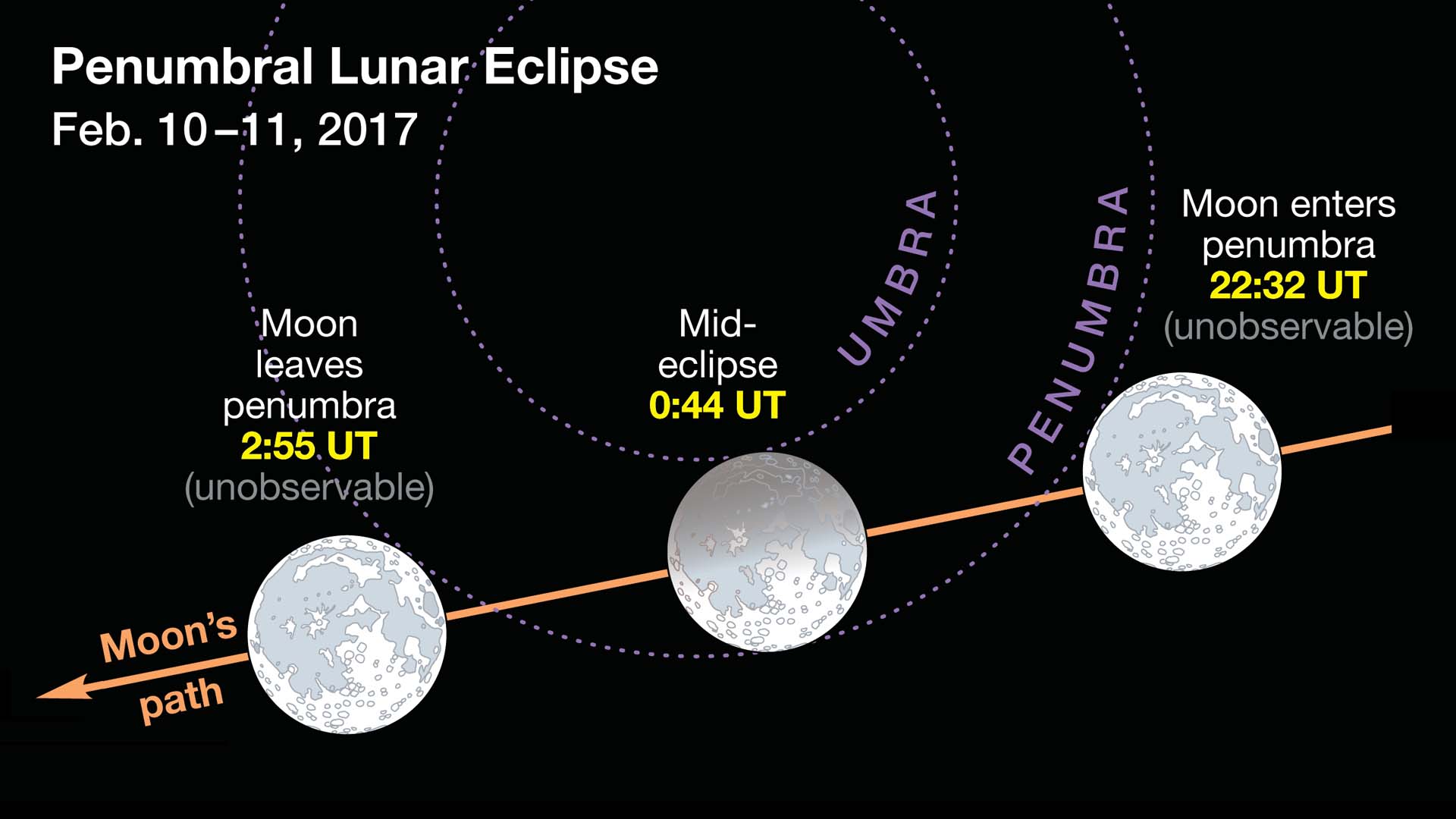Skywatchers will enjoy a rare space triple-header Friday night and early Saturday morning…
A “penumbra” lunar eclipse during the full “snow” moon… and the flyby of a comet.
Here’s a look at what you will see if you set your eyes to the night sky:
Penumbral lunar eclipse

Eagle-eyed skywatchers will see a “penumbral” lunar eclipse Friday evening during the full moon.
This rather subtle phenomenon occurs when the moon moves through the outer part of Earth’s shadow – the penumbra. The outer shadow of the Earth blocks part — but not all — of the sun’s rays from reaching the moon, making it appear slightly darker than usual.

The exact moment of the penumbral eclipse is 7:43 p.m. ET (6:43 p.m. CT, 5:43 p.m. MT and 4:43 p.m. PT).
Full “snow” moon
As required during any eclipse, the moon will be full Friday night.

According to the Farmers’ Almanac, Native Americans in the northern and eastern U.S. named February’s full moon the “snow” moon or the “hunger” moonh. The tribes kept track of the seasons by giving distinctive names to each recurring full moon.
The Farmer’s Almanac reports some tribes referred to February’s moon as the , because harsh weather conditions made hunting difficult.
Comet 45P
A few hours after the eclipse, Comet 45P, which has been visible after sunset for the past two months through binoculars and telescopes, makes its closest approach to Earth, when it will be “only” 7.4 million miles away.
Look to the east around 3 a.m. Saturday morning, where it will be visible in the sky in the constellation Hercules. Binoculars or a telescope could be helpful. Watch for a bright blue-green “head” with a tail.

It will be visible in various points of the night sky until the end of February. If you miss it, don’t worry: It will return again in 2022.
So on February 10, 2017 keep your eyes to the sky!












[…] Skywatchers will enjoy a rare space triple-header Friday night and early Saturday morning…A ‘… […]
[…] ・strangesounds.org […]